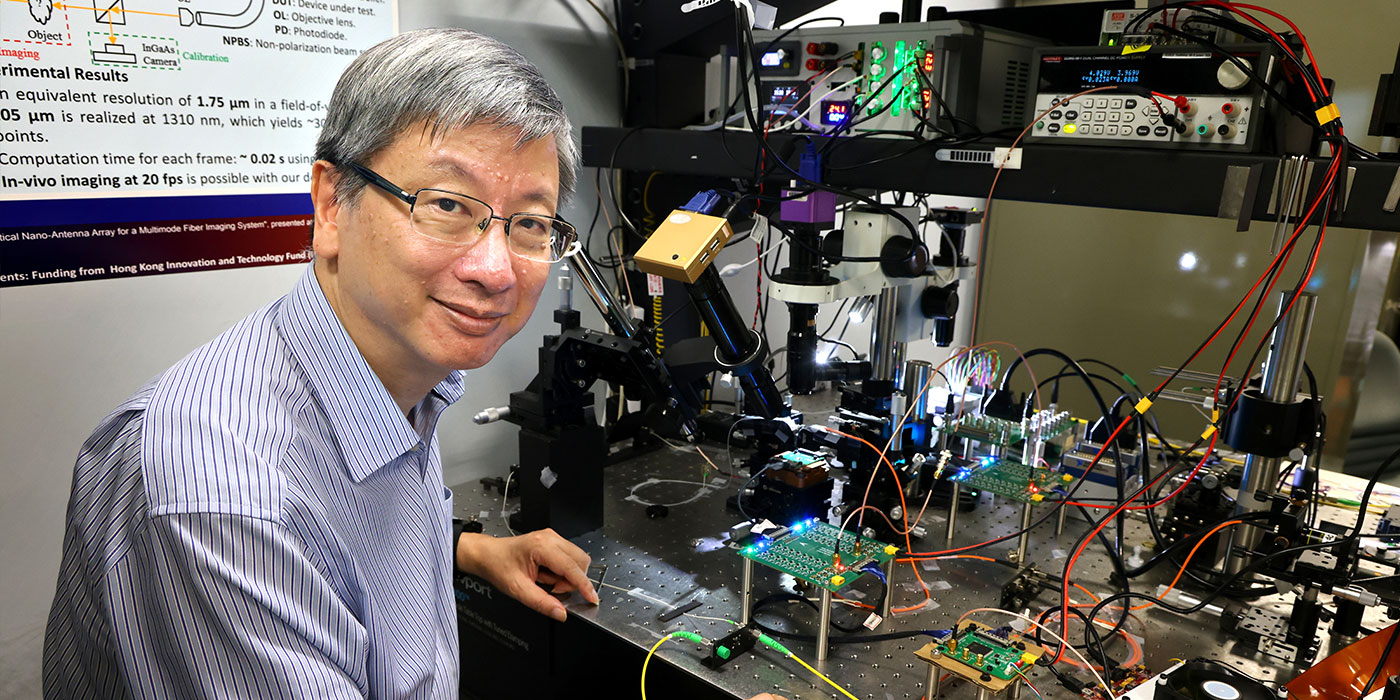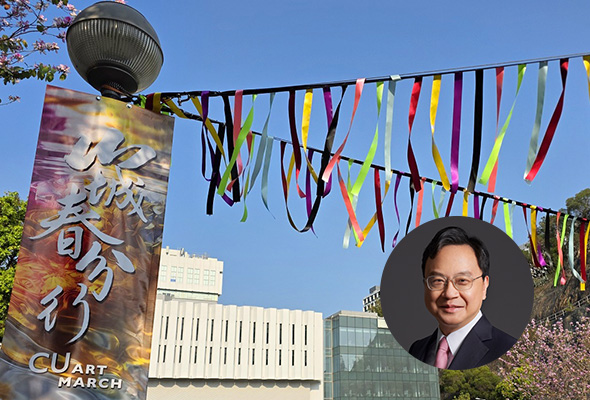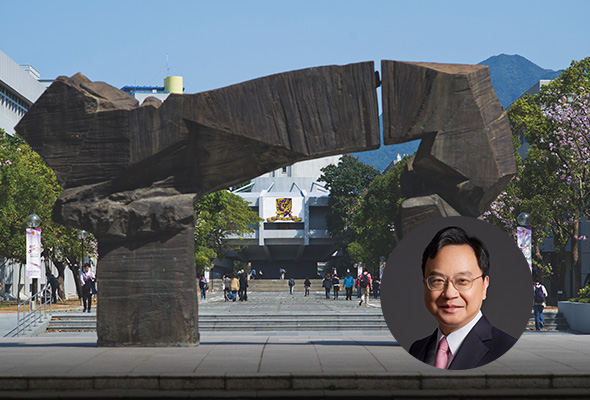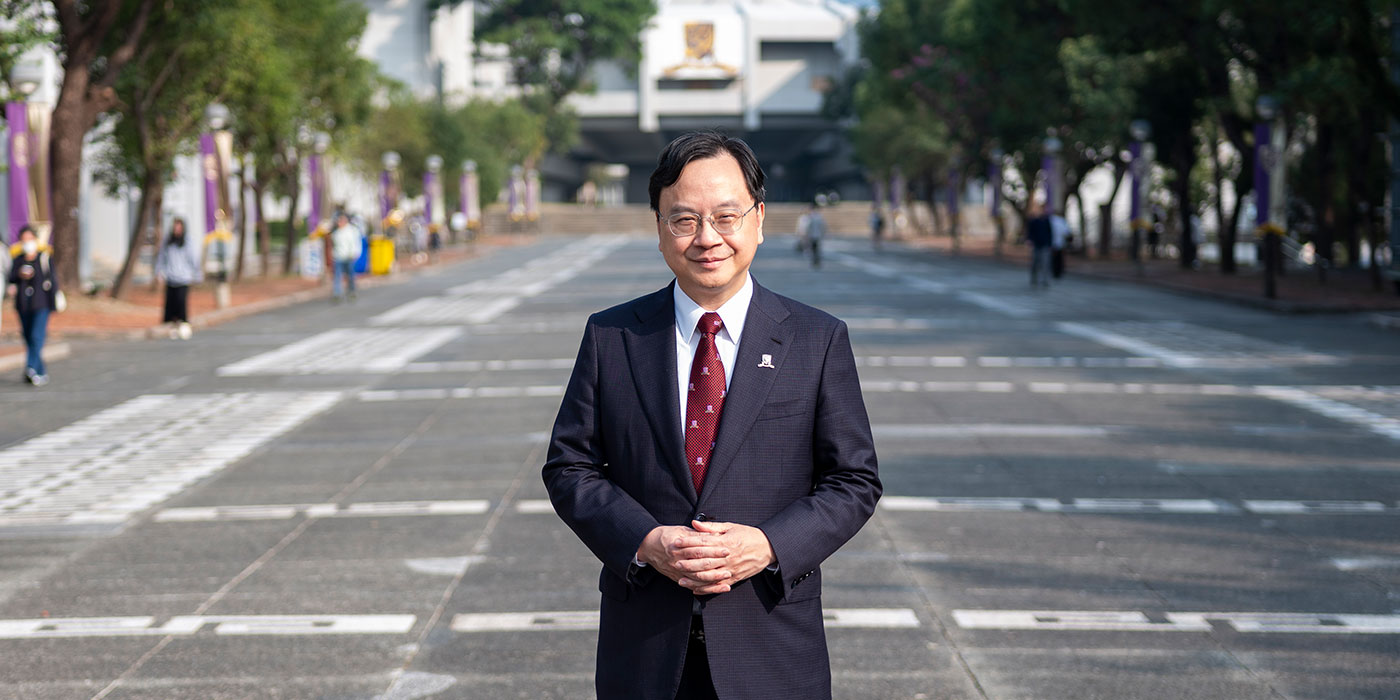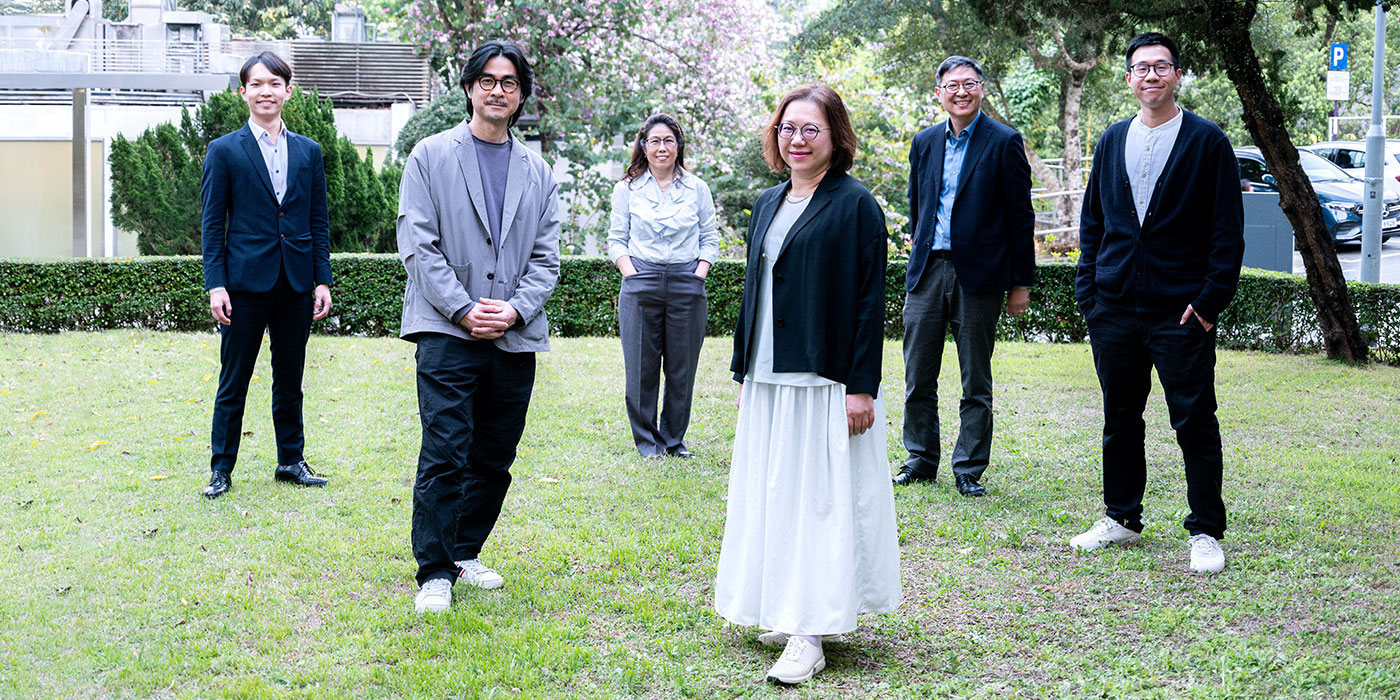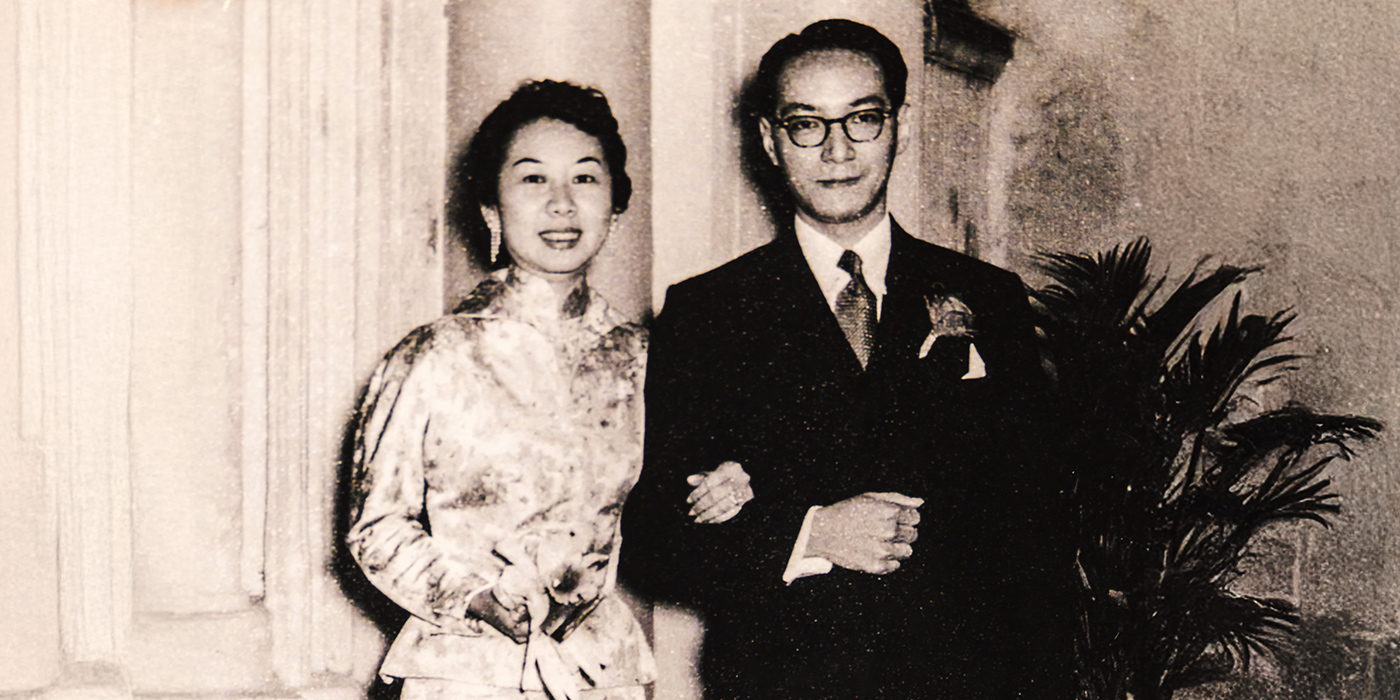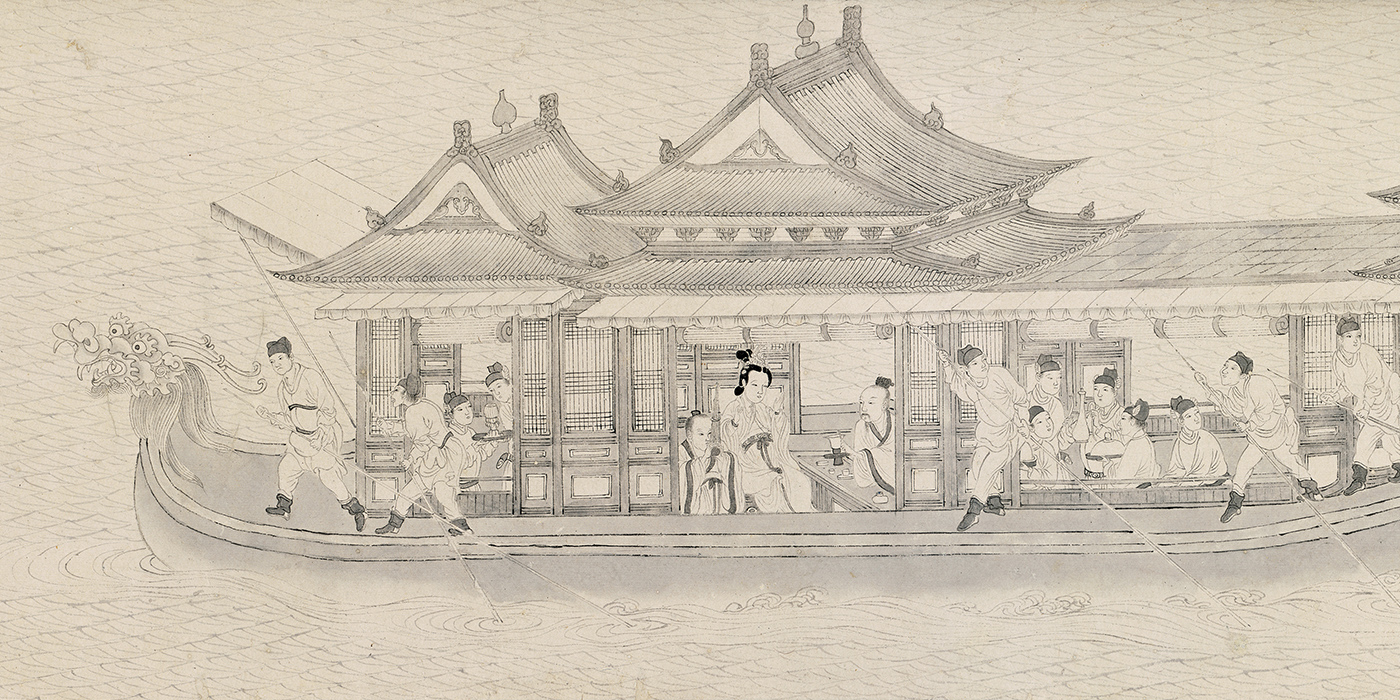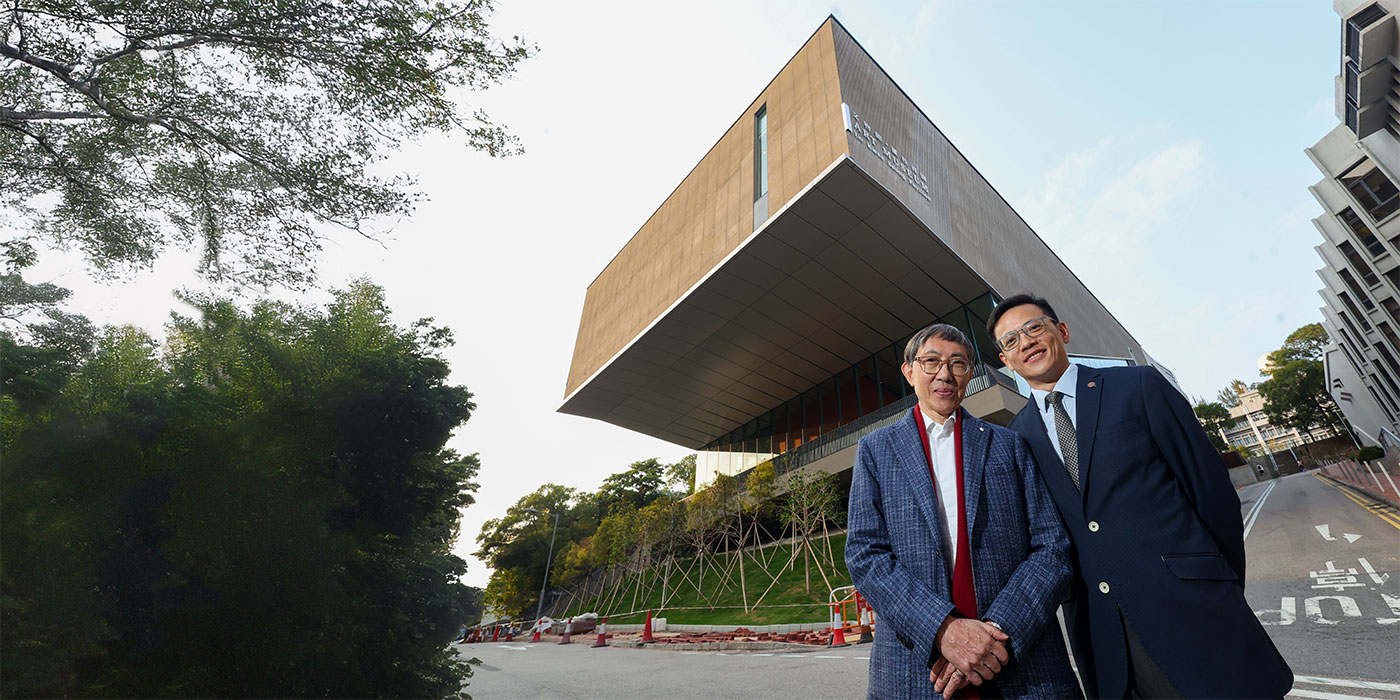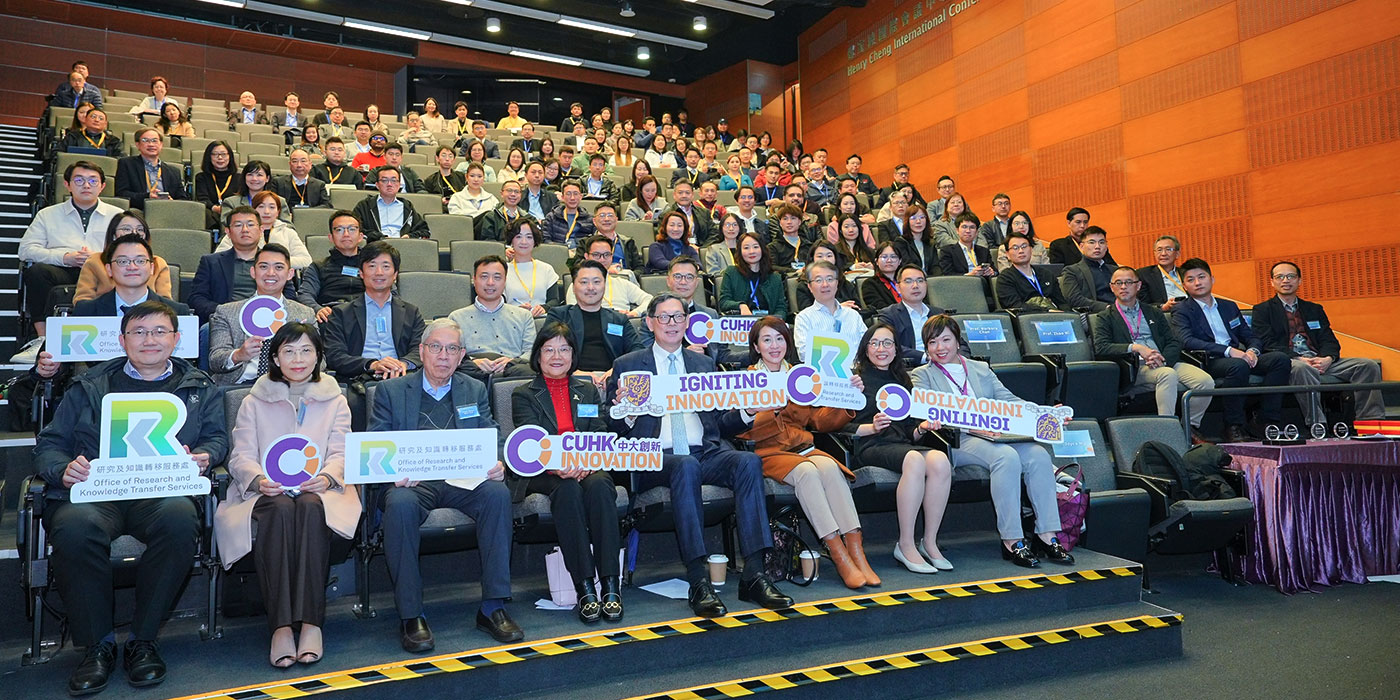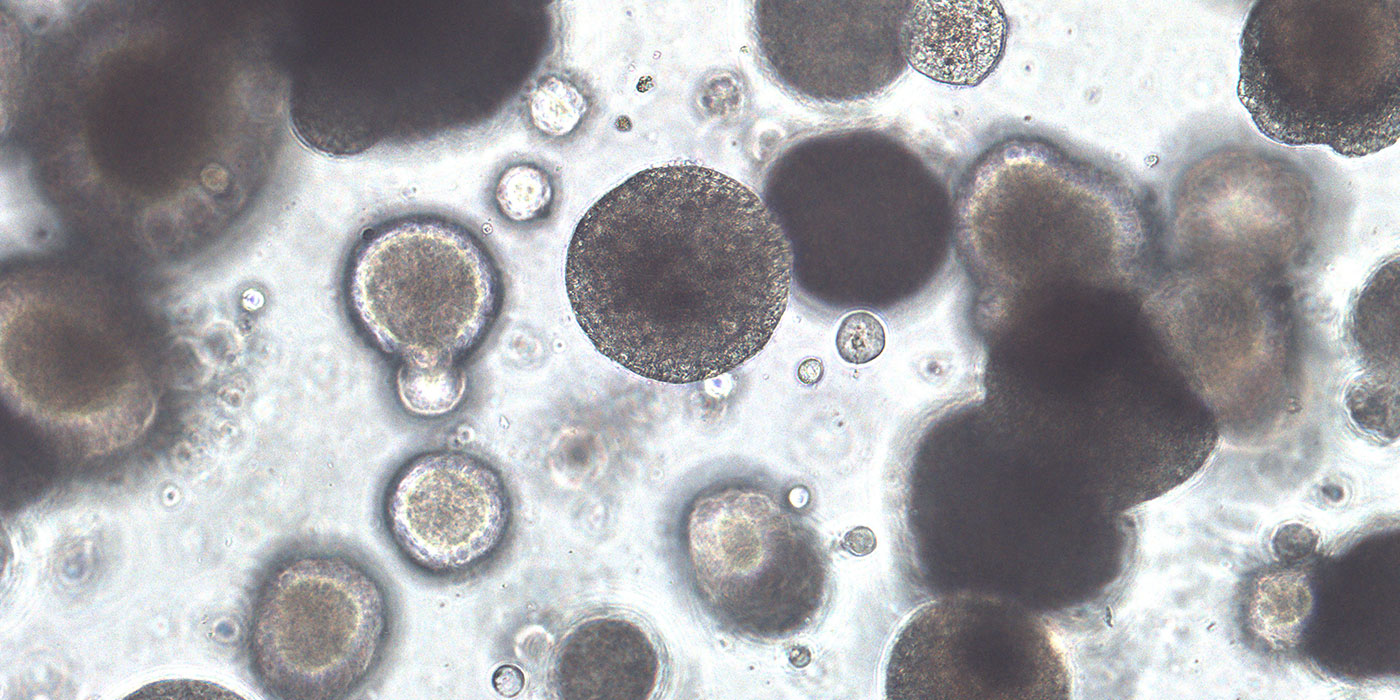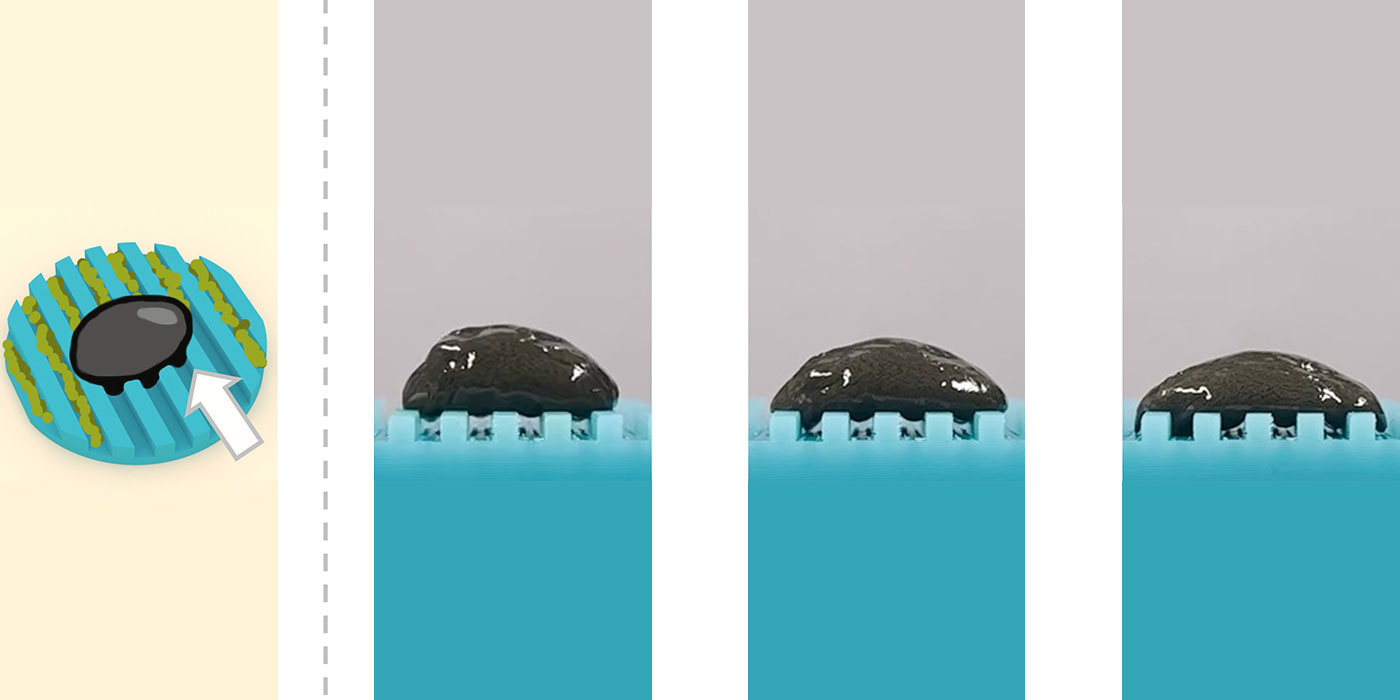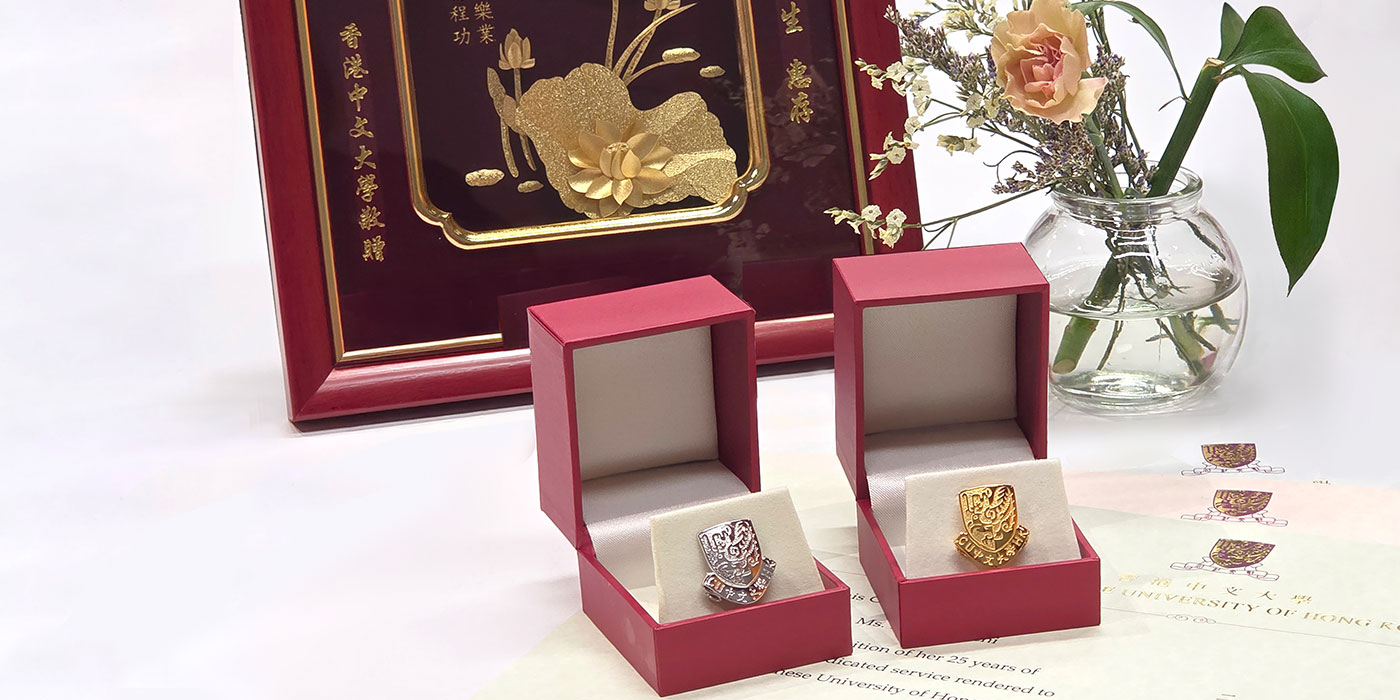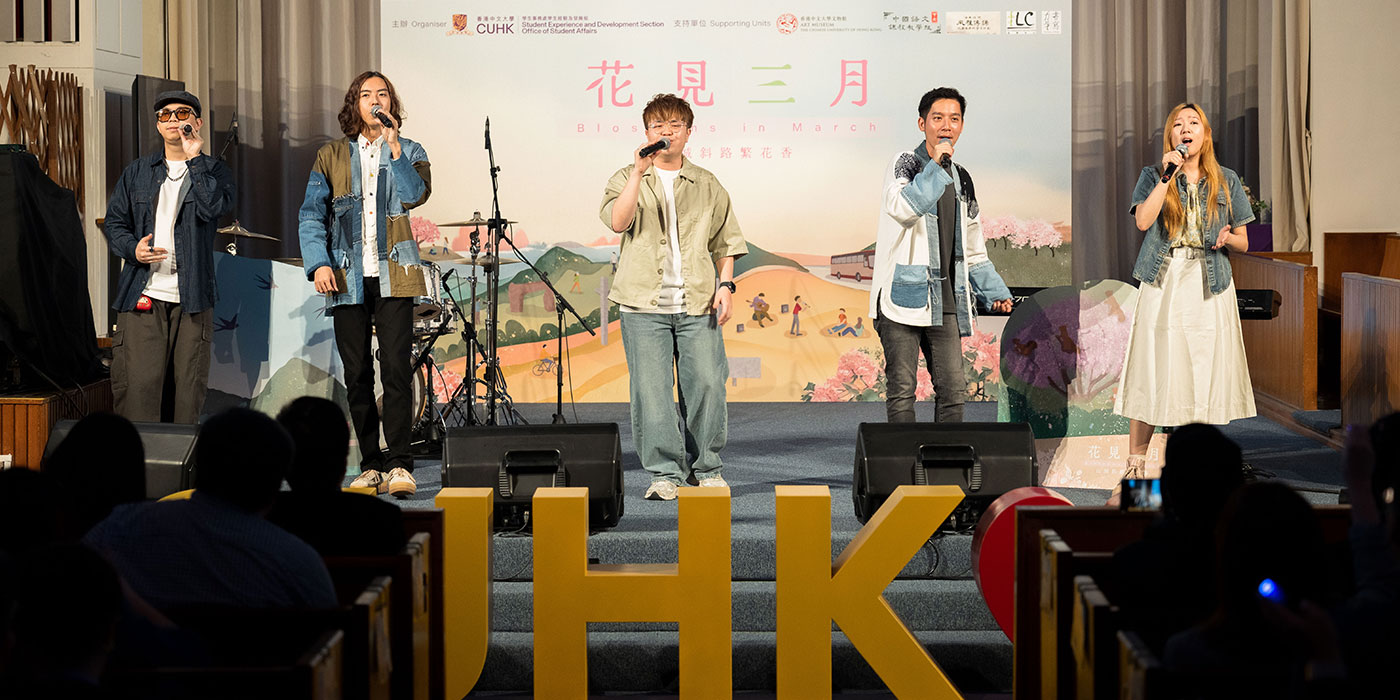Communicating at the speed of light
Professor Tsang Hon-ki on moving from lab to market
In this series, CUHK in Focus talks to principal investigators of the seven CUHK projects chosen for the Hong Kong government’s inaugural Research, Academic and Industry Sectors One-plus (RAISe+) Scheme. The scheme seeks to help local universities transform and commercialise their research and development (R&D) outcomes, and provides funds, on a matching basis, of up to HK$100 million to each approved university project undertaken by research teams with the potential to transform successful start-ups.
It was boredom that drove Professor Tsang Hon-ki into his current academic field. While an undergraduate student in engineering at the University of Cambridge in the 1980s, the current Dean of Engineering at CUHK spent a few months interning at a telecommunications company, where he quickly realised that his passion did not lie in writing computer code. “I was bored out of my mind,” he recalls. “I was just facing the same code, and then debugging it, then doing it all over again, and I thought ‘after I graduate, I do not want to enter that as a profession’.” Fortunately for himself and the engineering world, he also did a stint in that company’s optical fibre communications lab, where he found himself fascinated by the fledgling optics industry and its exponential possibilities. This sparked his lifelong interest in optics, culminating in his new leadership of a start-up dedicated to the design of silicon photonic chips.
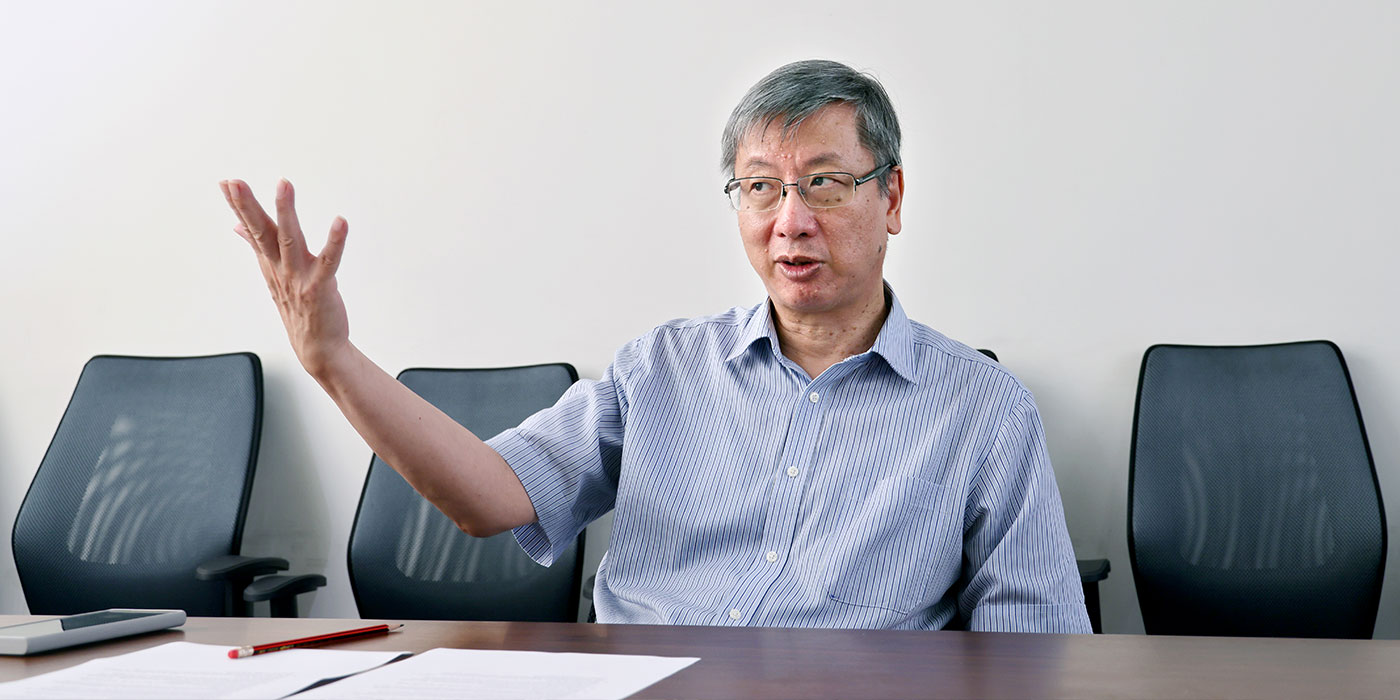
Most silicon chips these days transmit information via electrical signals. However, these signals generate heat as they travel, which presents a problem. “If you go beyond around five or six gigahertz, which is the switching speed of a notebook computer, the electric wires generate so much heat that the chip becomes unusable,” says Professor Tsang. On the other hand, light presents no such issue: “if you use light instead, then you can switch optical signals very quickly. 100 Giga-baud [a speed unit] is no problem. You can go transmit information orders of magnitude faster, and you can go long distances without loss.”
This area of academic study, known as silicon photonics, has become increasingly relevant with the ever-increasing amounts of information being transmitted every day. Back when the professor first focused on the subject in the late 1990s, “you could literally, with one batch of wafers, supply the whole of the world with the wavelength division routers that telecom systems needed, and it was commercially unviable for a company to run a semiconductor fabrication facility just for silicon photonics products for the limited telecom market.” But since then, optical interconnects for computers have become mainstream technology, and now there exist many new silicon photonics fabrication foundries. It is now possible for a company to become established without having a fabrication facility of its own, following the well-established fabless design house business model in the microelectronics industry. In the last 20 years, the professor has also steadily built on his research, contributing to the latest technologies in the field. Today, just as the digital world grows ever more information-hungry, his research on silicon photonics has proven to be a serendipitous career choice.
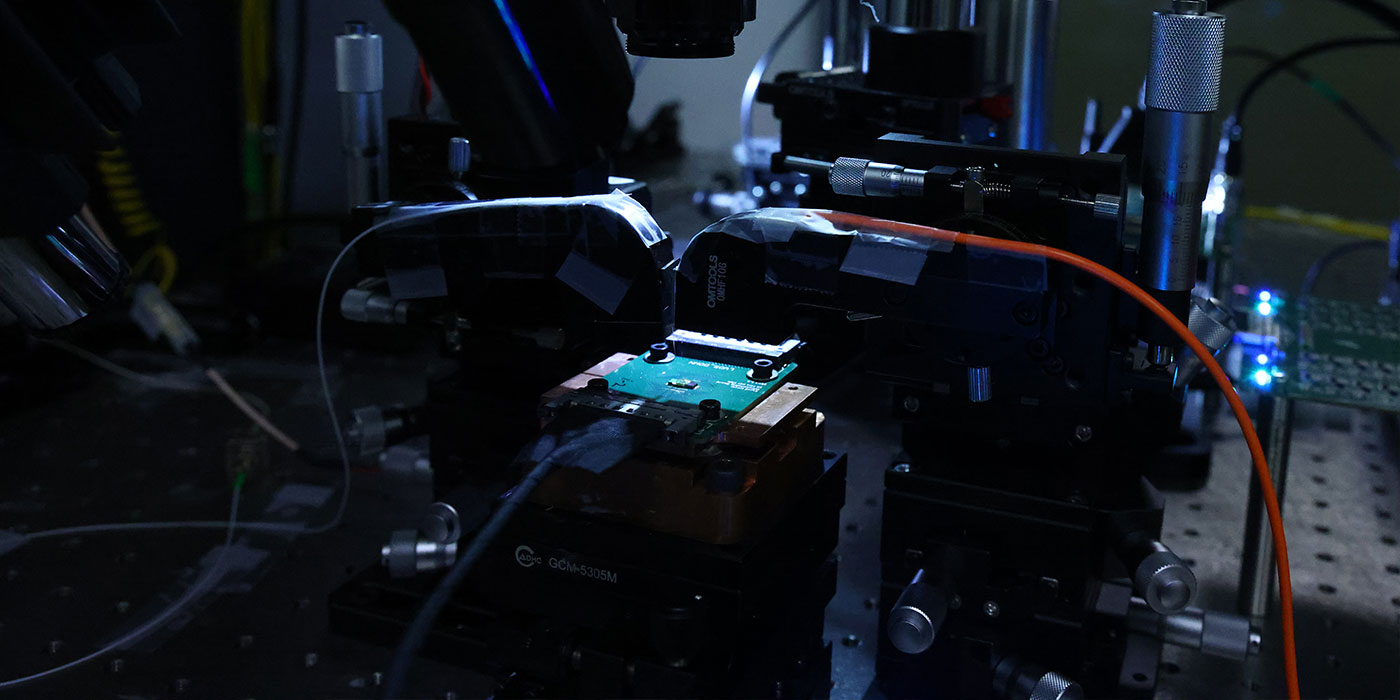
Many hands make light work
Professor Tsang’s expertise is not limited to the world of academia. He was previously director of R&D at Bookham Technology plc, a UK-based startup which, at its peak valuation, had a market capitalisation that ranked it among the top FTSE-100 companies. This brief detour into the world of business seeded the vision for the start-up with his CUHK research team this year, one which focused on perfecting the design of silicon photonic chips. “What we are trying to do here is to form a startup company which is focused on our core strength of silicon photonics design, and to work with existing companies, introducing them to some of our latest technology.”
His efforts caught the eye of committee members of the RAISe+ Scheme. Professor Tsang’s application was shortlisted for interview in early 2024, and his team was quickly selected for funding approval in principle in May this year. They named their firm “Optihk”, a play on the German term optik, with the unique “hk” spelling signifying their local roots, and the team operate out of their base in CUHK. The professor sees boundless opportunities for Optihk: besides providing the basic technology for advanced multi-lane data communications in data centres, he believes that there are many other applications for silicon photonics. “For example, we can use light to detect potential skin cancer underneath the skin, or other diseases, through 3D imaging in real-time. Today, these are desktop-based systems that are not yet widely available. With chip technology, we can reduce their size to a tiny handheld platform. And we hope to make this technology so low-cost, that it becomes as cheap as a smart watch.”
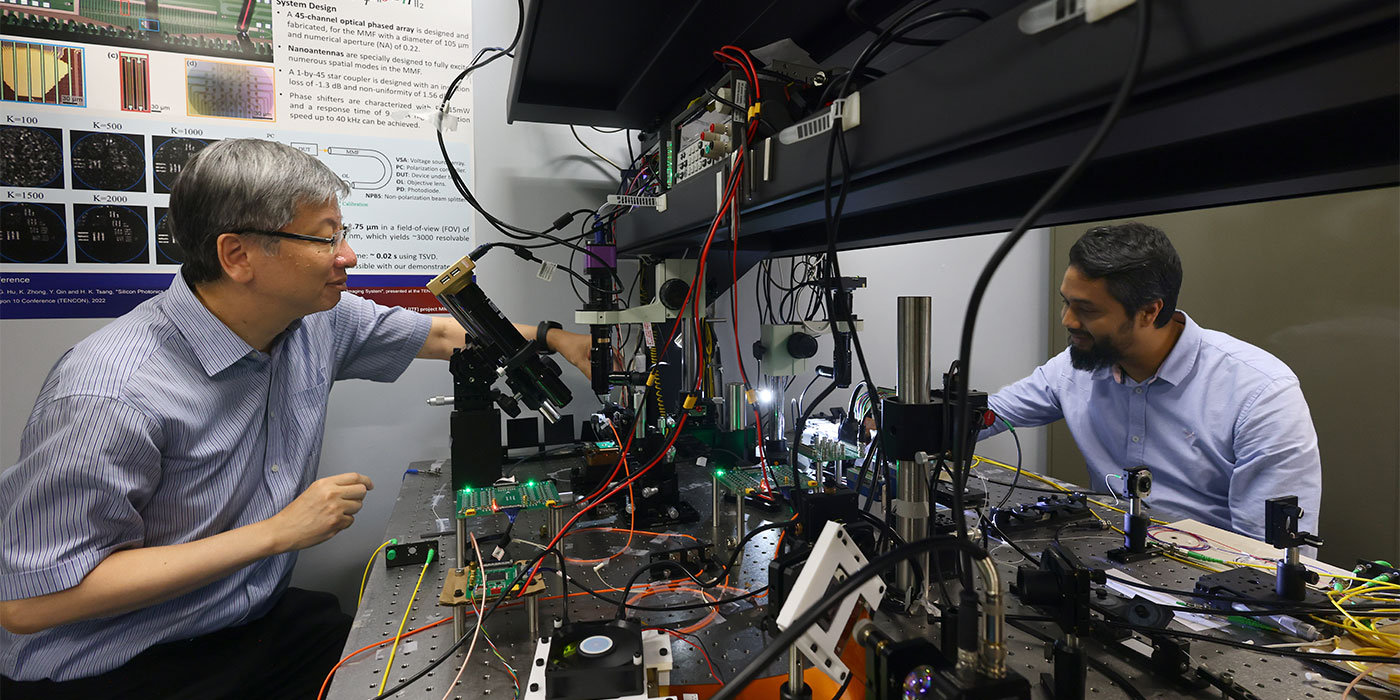
‘Making products that make money’
Although he remains firmly rooted in academia, Professor Tsang is keenly aware of the need for students to develop their own business acumen. For some years, he taught an undergraduate course at CUHK on engineering entrepreneurship. Many local students, he says, have “very little experience in the real world — they may understand mathematics, they may understand circuit design, but they don’t really see how this can be put together for making products that make money.” As a result, he started a course that aimed to utilise his own experience as an R&D director to help students of such hard sciences to look beyond mere technical aspects. “Technology is an enabler, but if you want to make money, you need to make products that can sell, and to do that you need to offer your customer something that has value.”
He hopes to cultivate this philosophy in members of his research team at Optihk to help them survive, and thrive, on the long road ahead. “My motivation in doing this,” he says, “is to try to see how the fruits of the last 20 years of my research can benefit the wider society, as well as give meaning to the research of many of my students, to inspire them to show that this technology can change the world.”
By Chamois Chui
Photos by D.Lee
- Samuel Au powers the future of healthcare with cutting-edge technology
- Barbara Chan endeavours to use tissue engineering to heal patients
- Lam Hon-ming pioneers sustainable agriculture through soybean research
- Liu Yun-hui drives robots with 3D-vision
- Tsang Hon-ki on moving from lab to market
- Raymond Yeung innovates in network technology for a smarter future
- Engineer Zhao Ni’s journey towards wearable medical devices for all

